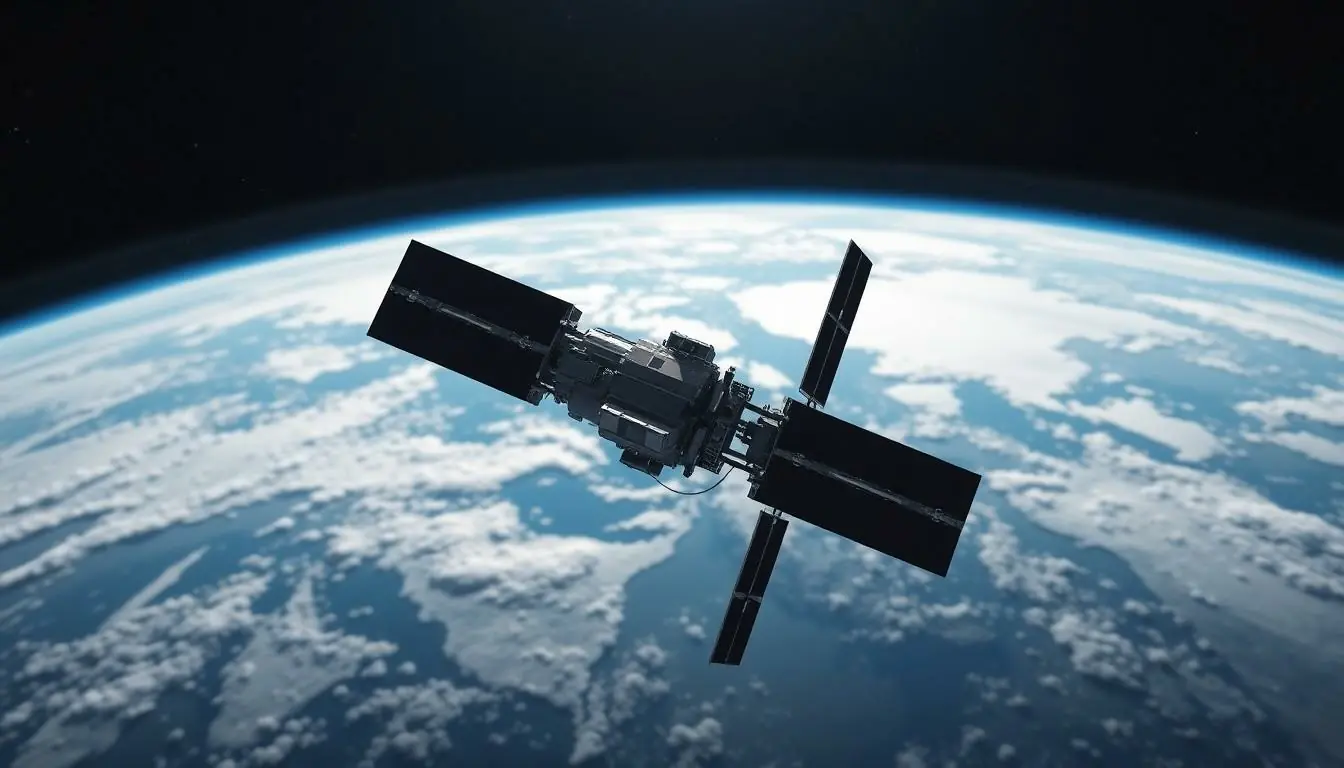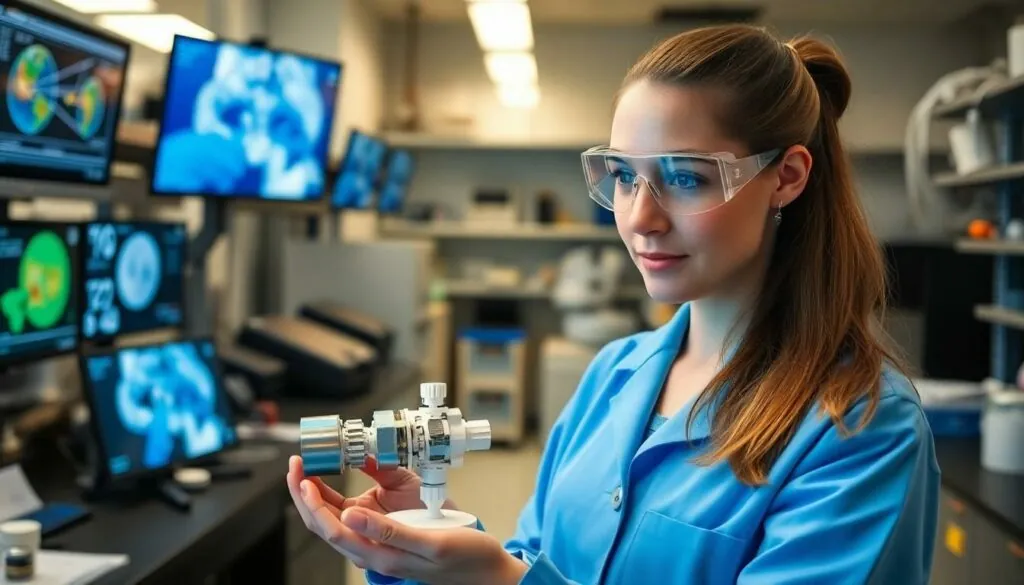Table of Contents
ToggleSpace exploration isn’t just about astronauts floating around in shiny suits or the occasional Martian selfie. It’s a treasure trove of technology that’s been beamed back to Earth, transforming everyday life in ways most people never realize. From the GPS guiding your morning commute to the materials that keep your smartphone from turning into a brick, space tech has snuck into our lives like a stealthy ninja.
Imagine a world where your coffee maker can predict your caffeine cravings or your fridge can remind you to buy more milk—all thanks to innovations developed for space missions. The impact of these advancements stretches far beyond the final frontier, proving that what happens in space doesn’t just stay in space. It’s time to explore how these cosmic breakthroughs are making life on Earth not just easier, but a whole lot cooler.
Overview of Space Exploration Technology
Space exploration technology encompasses various innovations that benefit terrestrial applications. Satellite technology represents a key area, providing essential services like weather forecasting and disaster management. GPS technology, developed for space missions, has become critical in navigation and mapping for personal and commercial use.
Robotic systems, initially designed for extraterrestrial environments, enhance manufacturing processes and automation on Earth. In fields such as medicine, advancements in imaging technology derived from space exploration improve diagnostic tools. For instance, techniques used in spacecraft imaging contribute to better MRI scans and advanced surgical procedures.
Materials technology, including heat-resistant materials, emerges from the challenges of space environments. These materials improve the durability and performance of consumer goods, ranging from sporting equipment to electronics. Heat shields developed for spacecraft protect vehicles during re-entry; similar materials find use in fireproof clothing and construction materials.
Communication technology has also evolved, allowing for faster data transmission. The advancements ensure reliable global communication through networks of satellites. Additionally, technologies like water purification systems stem from life support systems designed for long-duration space missions, ensuring access to clean water in remote areas.
Energy systems derived from space exploration optimize power sources. Solar panels, initially designed for spacecraft, now power homes and businesses, promoting sustainability. Innovations in battery technology enhance energy storage for renewable sources, supporting the transition to greener alternatives.
Overall, space exploration technology continues to impact various sectors, driving progress and improving life on Earth. Each advancement reinforces the integration of space technology into daily routines, often unnoticed yet profoundly influential.
Advancements in Communication

Communication technology has evolved significantly due to space exploration. This evolution fosters global connectivity and enhances information sharing.
Satellite Technology
Satellites play a crucial role in modern communication. These orbiting devices enable services like television broadcasting, internet connectivity, and mobile communications. Satellite networks also support emergency services by providing critical data during natural disasters. For example, organizations like NASA and the European Space Agency contribute to the development of communication satellites, enhancing bandwidth and signal clarity. Consequently, rural and remote areas gain access to services previously unavailable.
Data Transmission Improvements
Improvements in data transmission have transformed communication efficiency. Techniques derived from space missions optimize the delivery of information across vast distances. For instance, advancements in compression algorithms reduce the time needed to transmit data, ensuring prompt access. Companies utilize these improvements to enhance video conferencing and live broadcasting, making global communication seamless. High-throughput satellites further increase capacity, allowing more data to flow simultaneously. Such enhancements directly contribute to quicker and higher-quality interactions in both personal and professional realms.
Enhancements in Engineering
Space exploration technology enhances engineering by introducing innovative solutions across various fields. Advances in materials and manufacturing techniques are particularly notable.
Materials and Manufacturing Techniques
Space missions drive developments in materials science. High-performance composites developed for spacecraft increase the durability and efficiency of consumer products. Heat-resistant alloys improve machinery resilience. Innovations such as lightweight materials assist in energy-efficient transportation. Aerospace-grade polymers simplify the production of complex parts. Techniques derived from microgravity research streamline manufacturing processes, reducing waste and enhancing precision.
Robotics and Automation
Robotic systems developed for space exploration revolutionize automation in numerous industries. These sophisticated robots increase efficiency in manufacturing, leading to faster production times. Autonomous vehicles and drones transform logistics and transportation sectors. Innovations in robotic technology improve medical procedures, enhancing surgical accuracy. Industrial robots reduce repetitive tasks, allowing human workers to focus on more complex responsibilities. Space-inspired automation methodologies optimize agricultural practices, ensuring higher yields. Such enhancements demonstrate the profound impact of space technology on modern engineering practices.
Applications in Earth Science
Technologies developed for space exploration significantly enhance Earth science applications, particularly in climate monitoring and disaster management.
Climate Monitoring
Satellites play a crucial role in tracking climate variations. They provide critical data on atmospheric conditions, ocean temperatures, and land use changes. Remote sensing instruments measure greenhouse gas concentrations, aiding scientists in understanding climate dynamics. Tools like NASA’s Earth Observing System (EOS) collect long-term datasets, which are vital for climate modeling and predicting future trends. These insights help policymakers create effective strategies for climate change mitigation.
Disaster Management
Space technologies improve disaster preparedness and response capabilities. Satellite imaging enables real-time monitoring of natural disasters like hurricanes, floods, and wildfires. By providing timely information, they assist emergency responders in making informed decisions. Furthermore, advanced communication systems relay critical updates to affected populations, ensuring public safety. Utilizing datasets from space missions enhances risk assessment and helps allocate resources efficiently during emergencies.
Impacts on Medicine
Space exploration technology significantly impacts medicine, leading to advancements that improve patient care and treatment outcomes.
Medical Imaging Technology
Innovations in medical imaging technology often stem from space exploration. Advanced imaging techniques, such as MRI and CT scans, draw on principles first developed for space missions. Satellites equipped with imaging sensors facilitate detailed scans, allowing for precise diagnostics. Improved imaging software enhances the clarity of medical images, aiding healthcare professionals in detecting diseases earlier. Tools used in diagnosing conditions, like Computer-Aided Detection systems, originate from technologies designed for space exploration.
Drug Development Processes
Drug development processes also benefit from space-related technologies. Researchers employ techniques for analyzing molecular interactions that were initially designed for space missions. The pharmaceutical industry utilizes data from microgravity experiments to study the crystallization of proteins, leading to more effective medications. Scalable production processes derived from aerospace advancements streamline drug manufacturing. Additionally, computer simulations used in spacecraft design help model complex biochemical interactions, accelerating the overall drug discovery timeline.
Space exploration technology has undeniably reshaped everyday life in profound ways. Its innovations have permeated various sectors enhancing efficiency and effectiveness across the board. From advanced medical imaging to sustainable energy solutions these developments demonstrate the far-reaching benefits of space-derived technologies.
As society continues to embrace these advancements the potential for future innovations remains vast. The integration of space technology into daily life not only improves convenience but also fosters a deeper understanding of our planet and its challenges. This ongoing relationship between space exploration and terrestrial applications will likely pave the way for even greater achievements in the years to come.




